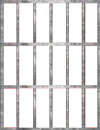- 5
- 59
https://abcnews.go.com/International/wireStory/death-toll-rockfall-brazilian-lake-rises-10-82166052
The accident occurred between the towns of Sao Jose da Barra and Capitolio, from which the boats had left. Video images showed a gathering of small boats moving slowly near the sheer rock cliff on Furnas Lake when a fissure appeared in the rock and a huge piece toppled onto several of the vessels.
The bodies were taken to Passos city, where coroners worked to identify them. The work was difficult because of the â³high energy impactâ³ of the rock on the boaters, said a regional civil police official, Marcos Pimenta. He said one victim had been identified as 68-year-old Júlio Borges Antunes.
Officials suggested the wall coming loose could have been related to heavy rains recently that caused flooding in the state and forced almost 17,000 people out of their homes.
- 26
- 93
Tsunami starts at 5;50
Tsunami starts at 7;20
Wait a minute at 10;45 there a ghost flying and suddenly disappears, Look on left
In fact it's a effect smoke not ghost
Tsunami starts at 13;00
Footage of coast guard ship over the tsunami waves
Video + Photo + Clearly
Info about Japan tsunami
An upthrust of 6 to 8 metres (20 to 26 ft) along a 180 kilometres (110 mi) wide seabed at 60 kilometres (37 mi) offshore from the l coast of Tōhoku resulted in a major tsunami that brought destruction along the Pacific coastline of Japan's northern islands. Thousands of lives were lost and entire towns were devastated. The tsunami propagated throughout the Pacific Ocean region reaching the entire Pacific coast of North and South America from Alaska to Chile. Warnings were issued and evacuations were carried out in many countries bordering the Pacific. Although the tsunami affected many of these places, the heights of the waves were minor. Chile's Pacific coast, one of the farthest from Japan at about 17,000 kilometres (11,000 mi) away, was struck by waves 2 metres (6.6 ft) high, compared with an estimated wave height of 38.9 metres (128 ft) at Omoe peninsula, Miyako city, Japan.
Aftermath
According to the Japan Reconstruction Agency, nearly 400,000 buildings were destroyed or irreparably damaged and another 750,000 were partially destroyed across the country in March 2011. Nearly 16,000 people were killed and 2,500 are still listed as missing.
Btw I'm first post in /h/disaster 
- 4
- 3
Hurricane Frederic was an intense and damaging tropical cyclone that carved a path of destruction from the Lesser Antilles to Quebec, in particular devastating areas of the United States Gulf Coast. Though only five were killed directly, the US$1.77 billion (equivalent to $5.4 billion in 2021) in damage accrued by Frederic made it the Atlantic basin's costliest tropical cyclone on record at the time. Prior to its final landfall, the threat that Frederic imposed on areas of the U.S. Gulf Coast triggered a mass exodus from the region larger than any other evacuation in the past. While the storm primarily impacted the U.S. states of Mississippi and Alabama, lesser effects were felt throughout the Greater and Lesser Antilles, as well as inland North America.
Frederic was the thirteenth tropical cyclone, sixth named storm, third hurricane, and second major hurricane of the 1979 Atlantic hurricane season. It developed from a tropical depression south of the Cape Verde Islands on August 28. Tracking at a steady clip westward, the primitive cyclone reached tropical storm intensity the next day. Favorable conditions in the open Atlantic allowed for Frederic to reach hurricane intensity on September 1. However, outflow from nearby Hurricane David began to inhibit further intensification and would continue to do so for roughly a week, weakening Frederic as it tracked across the Greater Antilles. The tropical cyclone nearly dissipated over Cuba before redeveloping on September 9 near the Isle of Youth. From then on, Frederic moved northwestward, intensifying to its peak intensity in the Gulf of Mexico with winds of 130 mph (210 km/h) on September 12, shortly before making landfall at Dauphin Island, Alabama just below the state line between Alabama and Mississippi. Over the United States, Frederic weakened for a final time before becoming extratropical in Pennsylvania on September 14 and dissipating the next day.
Damage estimates vary due to inadequate reporting of private insurance claims as well as lack of hard data on uninsured damage; Frederic is believed to have inflicted $5 million (1979 USD) in both Puerto Rico and the U.S. Virgin Islands, with an additional $1.7 billion in damage on the mainland United States. FEMA, which had been established only three months before Frederic hit, was the focal point for nearly $250 million in federal aid for recovery, $188 million of which went to Alabama (1979 USD). In southern Alabama, the landscape was changed for years, with thousands of tall pine trees tilted and leaning northwest.
(Full read on https://en.wikipedia.org/wiki/Hurricane_Frederic)
Videos:
That is all

- 14
- 48
I'm sure mostly everyone here remembers the 2004 tsunami. Being someone who enjoys natural disasters, I thought it would be obvious that this should be up here. There are thousands of images of this tsunami and the aftermath, but these images stuck with me. I've thrown in a few short videos or documentaries for your enjoyment. Sorry for any watermarks and for the poor first post! Still learning the layout and how I should put things. Child warning is up just in case.
The tsunami that hit the coasts of several countries of South and Southeast Asia in December 2004. The tsunami and its aftermath were responsible for immense destruction and loss on the rim of the Indian Ocean.
On December 26, 2004, at 7:59 am local time, an undersea earthquake with a magnitude of 9.1 struck off the coast of the Indonesian island of Sumatra. Over the next seven hours, a tsunami—a series of immense ocean waves—triggered by the quake reached out across the Indian Ocean, devastating coastal areas as far away as East Africa. Some locations reported that the waves had reached a height of 30 feet (9 meters) or more when they hit the shoreline. In total there were reports of waves being 15 to 30m (50 to 100 ft). The greatest run-up height of the tsunami was measured at a hill between Lhoknga and Leupung, on the western coast of the northern tip of Sumatra, near Banda Aceh, and reached 51m (167 ft)
The tsunami caused one of the largest natural disasters in recorded history, killing at least 225,000 people across a dozen countries, with Indonesia, Sri Lanka, India, Maldives, and Thailand sustaining massive damage. Indonesian officials estimated that the death toll there alone ultimately exceeded 200,000, particularly in northern Sumatra’s Aceh province. Tens of thousands were reported dead or missing in Sri Lanka and India, a large number of them from the Indian Andaman and Nicobar Islands territory. The low-lying island country of Maldives reported more than a hundred casualties and immense economic damage. Several thousand non-Asian tourists vacationing in the region also were reported dead or missing. The lack of food, clean water, and medical treatment—combined with the enormous task faced by relief workers trying to get supplies into some remote areas where roads had been destroyed or where civil war raged—extended the list of casualties. Long-term environmental damage was severe as well, with villages, tourist resorts, farmland, and fishing grounds demolished or inundated with debris, bodies, and plant-killing salt water.
The hot climate increased the rate of decomposition: bloating and discolouration of the human face rendered visual identification almost impossible after 24–48 hrs.
Sources: https://en.wikipedia.org/wiki/2004_Indian_Ocean_earthquake_and_tsunami
https://www.britannica.com/event/Indian-Ocean-tsunami-of-2004
https://knowledge.aidr.org.au/resources/tsunami-indian-ocean-boxing-day-tsunami-2004/
- 4
- 18
First time posting here, sorry if this is the wrong way to do it.
This is one of my favorite documentaries. It covers the 2004 Boxing Day tsunami, focused on actual footage of the disaster and interviews of the people who either took the footage in question, or are featured in the footage.
Lots of interesting stuff and plenty of death and aftermath throughout. I hope you all enjoy it as much as I did!
- 4
- 7
Hurricane Opal was a large and powerful Category 4 hurricane that caused severe and extensive damage along the northern Gulf Coast of the United States in October 1995. The fifteenth named storm, ninth hurricane and strongest tropical cyclone of the unusually active 1995 Atlantic hurricane season, Opal developed from the interaction of a tropical wave and a low-pressure area near the Yucatán Peninsula on September 27 as Tropical Depression Seventeen. The depression crossed the Yucatán Peninsula and intensified into a tropical storm on September 30. Opal intensified into a hurricane on October 2 after entering the Gulf of Mexico. The cyclone turned northeastward and strengthened significantly. By October 4, Opal was an intense 150 mph (240 km/h), Category 4 hurricane. With a minimum pressure of 916 mbar (hPa), Hurricane Opal was the most intense category 4 Atlantic hurricane on record. However, the cyclone abruptly weakened to a low-end Category 3 hurricane prior to making landfall on the Florida Panhandle near Pensacola later that day. The storm quickly unraveled as it moved inland and became extratropical on October 5. The remnants of Opal moved northward and dissipated over Ontario the following day.
The precursor and initial stages of Opal brought heavy rainfall and flooding to Guatemala and Mexico. In the former, flooding and landslides left about 34,000 people homeless and damage to infrastructure and agriculture. A total of 31 deaths occurred in Guatemala. In Mexico, a number of rivers overflowed in the states of Campeche and Tabasco, forcing more than 42,000 people to evacuate. The storm left hundreds of millions of dollars in damage to agriculture in Campeche alone. Nineteen people were killed in the country. In Florida, high winds and storm surge left extensive damage in the panhandle. The majority of structures were swept away or experienced some degree of damage, particularly from Wakulla County westward. In Escambia, Okaloosa, Santa Rosa and Bay counties, nearly 300 homes were destroyed and 1,000 others suffered major damage. The storm left at least $2.1 billion in damage in Florida alone. Several other states were impacted by the storm, especially Alabama, where the storm spawned many tornadoes and strong winds downed numerous trees and left about 2.6 million people without electricity. A total of 27 deaths were attributed to Opal in the United States. The hurricane overall left about $4.7 billion in damage, much of which took place in the US. Due to its destructive effects, the name Opal was retired in the spring of 1996 and replaced with Olga for the 2001 season.
(Further read in https://en.wikipedia.org/wiki/Hurricane_Opal)
Videos:
Other Links:
*https://ncics.org/ibtracs/index.php?name=v04r00-1995271N19273
That is all
- 3
- 4
Hurricane Danny was the only hurricane to make landfall in the United States during the 1997 Atlantic hurricane season, and the second hurricane and fourth tropical storm of the season. The system became the earliest-formed fifth tropical or subtropical storm of the Atlantic season in history when it attained tropical storm strength on July 17, and held that record until the 2005 Atlantic hurricane season when Tropical Storm Emily broke that record by several days. Like the previous four tropical or subtropical cyclones of the season, Danny had a non-tropical origin, after a trough spawned convection that entered the warm waters of the Gulf of Mexico. Danny was guided northeast through the Gulf of Mexico by two high pressure areas, a rare occurrence in the middle of July. After making landfall on the Gulf Coast, Danny tracked across the southeastern United States and ultimately affected parts of New England with rain and wind.
Danny is notable for its extreme rainfall, the tornadoes generated by it, and the destruction it produced on its path, causing a total of nine fatalities and $100 million (1997 USD, $182 million 2023 USD) in damage. The storm dropped a record amount of rainfall for Alabama, as at least 36.71 inches (932 mm) fell on Dauphin Island. Flooding, power outages, and erosion occurred in many areas of the Gulf Coast, and rescues had to be executed from flooded roadways. Tornadoes generated by Danny on the East Coast caused a great amount of damage. Of the nine fatalities caused by Danny, one happened off the coast of Alabama, four occurred in Georgia, two occurred in South Carolina, and two occurred in North Carolina.
(Further read in https://en.wikipedia.org/wiki/Hurricane_Danny_(1997))
Videos:
Photos:
Other links:
https://ncics.org/ibtracs/index.php?name=v04r00-1997198N27267
That is all
- 14
- 42
The Chernobyl disaster was a nuclear accident that occurred on 26 April 1986 at the No. 4 reactor in the Chernobyl Nuclear Power Plant, near the city of Pripyat in the north of the Ukrainian SSR in the Soviet Union. Called the world's worst-ever civil nuclear incident, it is one of only two nuclear energy accidents rated at seven—the maximum severity—on the International Nuclear Event Scale, the other being the 2011 Fukushima nuclear disaster in Japan. The initial emergency response, together with later decontamination of the environment, involved more than 500,000 personnel and cost an estimated 18 billion roubles—roughly US $68 billion in 2019, adjusted for inflation.
Reactor 4 several months after the disaster. Reactor 3 can be seen behind the ventilation stack
A video of operators in the "Elephants foot" near Reactor 4, which was just a built up mass of corium and other materials. (The video quality is boosted to 1080p, and those particles are just radiation messing with the camera itself)
For more context about the actual accident:
The accident occurred during a safety test meant to measure the ability of the steam turbine to power the emergency feedwater pumps of an RBMK-type nuclear reactor in the event of a simultaneous loss of external power and major coolant leak. During a planned decrease of reactor power in preparation for the test, the operators accidentally dropped power output to near-zero, due partially to xenon poisoning. While recovering from the power drop and stabilizing the reactor, the operators removed a number of control rods which exceeded limits set by the operating procedures. Upon test completion, the operators triggered a reactor shutdown. Due to a design flaw, this action resulted in localized increases in reactivity within the reactor (i.e., "positive scram"). That brought about the rupture of fuel channels and a rapid drop in pressure, thereby prompting the coolant to flash to steam. Neutron absorption thus dropped, leading to an increase in reactor activity, which further increased coolant temperatures (a positive feedback loop). This process led to steam explosions and the melting of the reactor core.
The meltdown and explosions ruptured the reactor core and destroyed the reactor building. This was immediately followed by an open-air reactor core fire which lasted until 4 May 1986, during which airborne radioactive contaminants were released and deposited onto other parts of the USSR and Europe. Approximately 70% landed in Byelorussia (now Belarus), 16 kilometres (9.9 mi) away. The fire released about the same amount of radioactive material as the initial explosion. In response to the initial accident, a 10-kilometre (6.2 mi) radius exclusion zone was created 36 hours after the accident, from which approximately 49,000 people were evacuated, primarily from Pripyat. The exclusion zone was later increased to a radius of 30 kilometres (19 mi), from which an additional ~68,000 people were evacuated.
Following the reactor explosion, which killed two engineers and severely burned two more, a secret emergency operation to put out the fire, stabilize the reactor, and clean up the ejected radioactive material began. During the immediate emergency response, 237 workers were hospitalized, of which 134 exhibited symptoms of acute radiation syndrome (ARS). Among those hospitalized, 28 died within the following three months, all of whom were hospitalized for ARS. In the following 10 years, 14 more workers (9 who had been hospitalized with ARS) died of various causes mostly unrelated to radiation exposure.
The Soviet government engaged in a major cover-up of the disaster in 1986. When they finally acknowledged it, although without any details, the Telegraph Agency of the Soviet Union (TASS) then discussed the Three Mile Island accident and other American nuclear accidents, which Serge Schmemann of The New York Times wrote was an example of the common Soviet tactic of whataboutism. The mention of a commission also indicated to observers the seriousness of the incident, and subsequent state radio broadcasts were replaced with classical music, which was a common method of preparing the public for an announcement of a tragedy in the USSR.
Chernobyl's health effects to the general population are uncertain. An excess of 15 childhood thyroid cancer deaths were documented as of 2011. A United Nations committee found that to date fewer than 100 deaths have resulted from the fallout. Determining the total eventual number of exposure related deaths is uncertain based on the linear no-threshold model, a contested statistical model. Model predictions of the eventual total death toll in the coming decades vary. The most widely cited studies by the World Health Organization predict an eventual 9,000 cancer related fatalities in Ukraine, Belarus and Russia.
Following the disaster, Pripyat was abandoned and eventually replaced by the new purpose-built city of Slavutych. The Chernobyl Nuclear Power Plant sarcophagus was built by December 1986. It reduced the spread of radioactive contamination from the wreckage and protected it from weathering. The confinement shelter also provided radiological protection for the crews of the undamaged reactors at the site, which were restarted in late 1986 and 1987. However, this containment structure was only intended to last for 30 years, and required considerable reinforcement in the early 2000s. The Shelter was heavily supplemented in 2017 by the Chernobyl New Safe Confinement, which was constructed around the old structure. This larger enclosure aims to enable the removal of both the sarcophagus and the reactor debris while containing the radioactive materials inside. Clean-up is scheduled for completion by 2065.
Photos of the Elephants Foot, requested by @ZeroK
- 14
- 24
Hurricane Ian was a powerful Category 5 Atlantic hurricane, the third-costliest weather disaster on record, the deadliest hurricane to strike the state of Florida since the 1935 Labor Day hurricane, and the strongest hurricane to make landfall in Florida since Michael in 2018. Ian caused widespread damage across western Cuba, Florida, and the Carolinas. Ian was the ninth named storm, fourth hurricane, and second major hurricane of the 2022 Atlantic hurricane season. Ian was the first Category 5 hurricane in the Atlantic since Lorenzo in 2019, and the fifth since 2016 to reach that strength before making landfall in the U.S.
Ian originated from a tropical wave that moved off the coast of Western Africa and across the central tropical Atlantic towards the Windward Islands. The wave moved into the Caribbean Sea on September 21 bringing heavy rain and gusty winds to Trinidad and Tobago, the ABC islands, and the northern coast of South America. On the morning of September 23, the wave had enough organization to be designated as a tropical depression, after which it strengthened into Tropical Storm Ian early the next day while it was southeast of Jamaica. As Ian rapidly intensified into a high-end Category 3 hurricane it made landfall in western Cuba. Heavy rainfall caused widespread flooding across the area resulting in a nationwide power outage. Ian lost a minimal amount of strength while over land and soon re-strengthened while over the southeastern Gulf of Mexico. It peaked as a Category 5 hurricane with sustained winds of 160 mph (260 km/h) early on September 28, while progressing towards the west coast of Florida, and made landfall just below peak intensity in Southwest Florida on Cayo Costa Island. In doing so, Ian tied with several other storms to become the 5th-strongest hurricane on record to make landfall in the contiguous United States. After moving inland, Ian quickly weakened to a tropical storm before moving back offshore into the Atlantic. There it re-strengthened to become a hurricane once again before making its final landfall in South Carolina on September 30. Ian became extratropical shortly after landfall and fully dissipated by early the next day.
Hurricane Ian caused 161 fatalities: 5 in Cuba, 150 in Florida, 5 in North Carolina, and 1 in Virginia. Ian caused catastrophic damage with losses estimated to be around $113 billion. Much of the damage was from flooding brought about by a storm surge of 10–15 ft (3.0–4.6 m). The cities of Fort Myers, Cape Coral, and Naples were particularly hard hit, leaving millions without power in the storm's wake and numerous inhabitants forced to take refuge on their roofs. Sanibel Island, Fort Myers Beach, and Pine Island bore the brunt of Ian's powerful winds and its accompanying storm surge at landfall, which leveled nearly all standing structures and collapsed the Sanibel Causeway and the Matlacha bridge to Pine Island, entrapping those left on the islands for several days.
(Further read: https://en.wikipedia.org/wiki/Hurricane_Ian)
Fatalities :
:
161 total,
3 missing.
Video:
Other Video Links:
*
*
*
*
*
*
Photos:
Sources:
*https://en.wikipedia.org/wiki/Hurricane_Ian
*https://www.nhc.noaa.gov/data/tcr/AL092022_Ian.pdf
*https://www.ncei.noaa.gov/access/billions/events
*https://www.washingtonpost.com/weather/2023/04/03/hurricane-ian-category-5/
*http://yaleclimateconnections.org/2022/09/ian-smashes-into-southwest-florida-with-historic-force/
*https://www.fdle.state.fl.us/News/2023/February/Update-Florida-Medical-Examiners-Commission-Hurric
*...
Other Links:
*https://ncics.org/ibtracs/index.php?name=v04r00-2022263N10313
That is all
- 5
- 27
On 11 March 2011, a nuclear accident occurred at the Fukushima Daiichi Nuclear Power Plant in Ōkuma, Fukushima, Japan. The proximate cause of the disaster was the Tōhoku earthquake and tsunami, which remains the most powerful earthquake ever recorded in Japan. The earthquake triggered a powerful tsunami, with 13- to 14-meter-high waves damaging the nuclear power plant's emergency diesel generators, leading to a loss of electric power. The result was the most severe nuclear accident since the Chernobyl disaster in 1986, classified as level seven on the International Nuclear Event Scale (INES) after initially being classified as level five, and thus joining Chernobyl as the only other accident to receive such classification. While the 1957 explosion at the Mayak facility was the second worst by radioactivity released,[clarification needed] the INES ranks incidents by impact on population, so Chernobyl (335,000 people evacuated) and Fukushima (154,000 evacuated) rank higher than the 10,000 evacuated from the Mayak site in the rural southern Urals.
The accident was triggered by the Tōhoku earthquake and tsunami, which occurred in the Pacific Ocean about 72 kilometres (45 mi) east of the Japanese mainland at 14:46 JST on Friday, 11 March 2011. On detecting the earthquake, the active reactors automatically shut down their normal power-generating fission reactions. Because of these shutdowns and other electrical grid supply problems, the reactors' electricity supply failed, and their emergency diesel generators automatically started. Critically, these were required to provide electrical power to the pumps that circulated coolant through the reactors' cores. This continued circulation was vital to remove residual decay heat, which continues to be produced after fission has ceased. However, the earthquake had also generated a tsunami 14 metres (46 ft) high that arrived shortly afterwards, swept over the plant's seawall, and then flooded the lower parts of the reactor buildings at units 1–4. This flooding caused the failure of the emergency generators and loss of power to the circulating pumps. The resulting loss of reactor core cooling led to three nuclear meltdowns, three hydrogen explosions, and the release of radioactive contamination in Units 1, 2 and 3 between 12 and 15 March. The spent fuel pool of the previously shut-down Reactor 4 increased in temperature on 15 March due to decay heat from newly added spent fuel rods, but did not boil down sufficiently to expose the fuel On 11 March 2011, a nuclear accident occurred at the Fukushima Daiichi Nuclear Power Plant in Ōkuma, Fukushima, Japan. The proximate cause of the disaster was the Tōhoku earthquake and tsunami, which remains the most powerful earthquake ever recorded in Japan. The earthquake triggered a powerful tsunami, with 13- to 14-meter-high waves damaging the nuclear power plant's emergency diesel generators, leading to a loss of electric power. The result was the most severe nuclear accident since the Chernobyl disaster in 1986, classified as level seven on the International Nuclear Event Scale (INES) after initially being classified as level five, and thus joining Chernobyl as the only other accident to receive such classification. While the 1957 explosion at the Mayak facility was the second worst by radioactivity released,[clarification needed] the INES ranks incidents by impact on population, so Chernobyl (335,000 people evacuated) and Fukushima (154,000 evacuated) rank higher than the 10,000 evacuated from the Mayak site in the rural southern Urals.
Quick Facts Date, Location ...
The accident was triggered by the Tōhoku earthquake and tsunami, which occurred in the Pacific Ocean about 72 kilometres (45 mi) east of the Japanese mainland at 14:46 JST on Friday, 11 March 2011. On detecting the earthquake, the active reactors automatically shut down their normal power-generating fission reactions. Because of these shutdowns and other electrical grid supply problems, the reactors' electricity supply failed, and their emergency diesel generators automatically started. Critically, these were required to provide electrical power to the pumps that circulated coolant through the reactors' cores. This continued circulation was vital to remove residual decay heat, which continues to be produced after fission has ceased. However, the earthquake had also generated a tsunami 14 metres (46 ft) high that arrived shortly afterwards, swept over the plant's seawall, and then flooded the lower parts of the reactor buildings at units 1–4. This flooding caused the failure of the emergency generators and loss of power to the circulating pumps. The resulting loss of reactor core cooling led to three nuclear meltdowns, three hydrogen explosions, and the release of radioactive contamination in Units 1, 2 and 3 between 12 and 15 March. The spent fuel pool of the previously shut-down Reactor 4 increased in temperature on 15 March due to decay heat from newly added spent fuel rods, but did not boil down sufficiently to expose the fuel 
 Date
Date
11 March 2011; 12 years ago
Location
Ōkuma, Fukushima, Japan
Coordinates
37°25′17″N 141°1′57″E
Outcome
INES Level 7 (major accident)
Deaths
1 confirmed cancer death attributed to radiation exposure by the government for the purpose of compensation following opinions from a panel of radiologists and other experts.
Non-fatal injuries
16 with physical injuries due to hydrogen explosions,
2 workers taken to hospital with possible radiation burns
- 1
- 12
Hurricane Camille was the second most intense tropical cyclone on record to strike the United States (behind the 1935 Labor Day hurricane) and is one of just four Category 5 hurricanes to make landfall in the U.S.
The most intense storm of the 1969 Atlantic hurricane season, Camille originated as a tropical depression on August 14, south of Cuba, from a long-tracked tropical wave. Located in a favorable environment for strengthening, the storm quickly intensified into a Category 2 hurricane before striking the western part of Cuba on August 15. Emerging into the Gulf of Mexico, Camille underwent another period of rapid intensification and became a Category 5 hurricane the next day as it moved northward towards Louisiana and Mississippi. Despite weakening slightly on August 17, the hurricane quickly re-intensified back into a Category 5 hurricane before it made landfall a half hour before midnight in Bay St. Louis, Mississippi. At peak intensity, the hurricane had peak 1-minute sustained winds of 175 miles per hour (282 km/h) and a minimum pressure of 900 mbar (26.58 inHg), the second-lowest pressure recorded for a U.S. landfall behind the 1935 Labor Day hurricane. As Camille pushed inland, it quickly weakened and was a tropical depression by the time it was over the Ohio Valley. Once it emerged offshore, Camille was able to restrengthen to a strong tropical storm before becoming extratropical on August 22. Camille was absorbed by a frontal storm over the North Atlantic later that day.
Camille caused tremendous damage in its wake and produced a peak official storm surge of 24 feet (7.3 m). It flattened nearly everything along the Mississippi coast and caused additional flooding and deaths inland while crossing the Appalachian Mountains of Virginia. In the U.S., Camille killed more than 259 people and caused $1.42 billion in damages (equivalent to $11.3 billion in 2022).
Fatalities :
:
259 total
Photos:
Videos:
Sources:
https://books.google.com/books?id=x5PITr02w9oC&q="259"
https://books.google.com/books?id=JX4qAAAAMAAJ&q="259"
https://www.nhc.noaa.gov/news/UpdatedCostliest.pdf#page=2
Other Links:
https://ncics.org/ibtracs/index.php?name=v04r00-1969226N18280
That is all
- 4
- 32
The 1931 China floods, or the 1931 Yangtze–Huai River floods, occurred from June to August 1931 in China, hitting major cities such as Wuhan, Nanjing and beyond, and eventually culminated in a dike breach along Lake Gaoyou on 25 August 1931.
Fatality estimates vary widely. A field survey by the University of Nanking led by John Lossing Buck immediately after the flood found "150,000 people had drowned, and that this number represented less than a quarter of all fatalities during the first 100 days of the flood." The official report found 140,000 drowned and claims that "2 million people died during the flood, having drowned or died from lack of food". A cholera epidemic in the subsequent year, from May 1932, was officially reported to have 31,974 deaths and 100,666 cases. While frequently featured in the list of disasters in China by death toll, a popular high-end estimate of 3.7 to 4.0 million fatalities is instrumental in "helping the 1931 flood to secure its position on sensationalist lists of the world’s deadliest disasters."
Fatalities :
:
422,499–4,000,000
Photos:
Videos:
Sources:
https://en.wikipedia.org/wiki/1931_China_floods#CITEREFCourtney2018
https://en.wikipedia.org/wiki/1931_China_floods#CITEREFBuck1932
https://en.wikipedia.org/wiki/Immanuel_C._Y._Hsu
https://en.wikipedia.org/wiki/1931_China_floods#CITEREFNational_Flood_Relief_Commission1933
https://en.wikipedia.org/wiki/1931_China_floods#CITEREFNational_Flood_Relief_Commission1933
That is all
- 13
- 32
https://www.weather.gov/oun/events-19990503
I'm from Moore, Oklahoma and on May 3rd, 1999 we got hit with a horrible set of tornadoes. I was only 15 at the time but I remember everything about it. I was in a housing development that was hit and the damage was just devastating. My mom and I were lucky enough to get under some mattresses in the bathtub and only ended up losing the house and not our lives. Not a mile down the road a friend and his mother weren't so lucky. I can recall looking out my back window as the mile wide tornado was heading my way.
- 6
- 20
The large explosion at 06:45 is likely what you are here for.
On May 4, 1988, a fire followed by several explosions occurred at the Pacific Engineering and Production Company of Nevada (PEPCON) chemical plant in Henderson, Nevada. The disaster caused two fatalities, 372 injuries, and an estimated $100 million of damage.



















































.webp?x=8)





















































 Slavshit
Slavshit

 Sandshit
Sandshit
